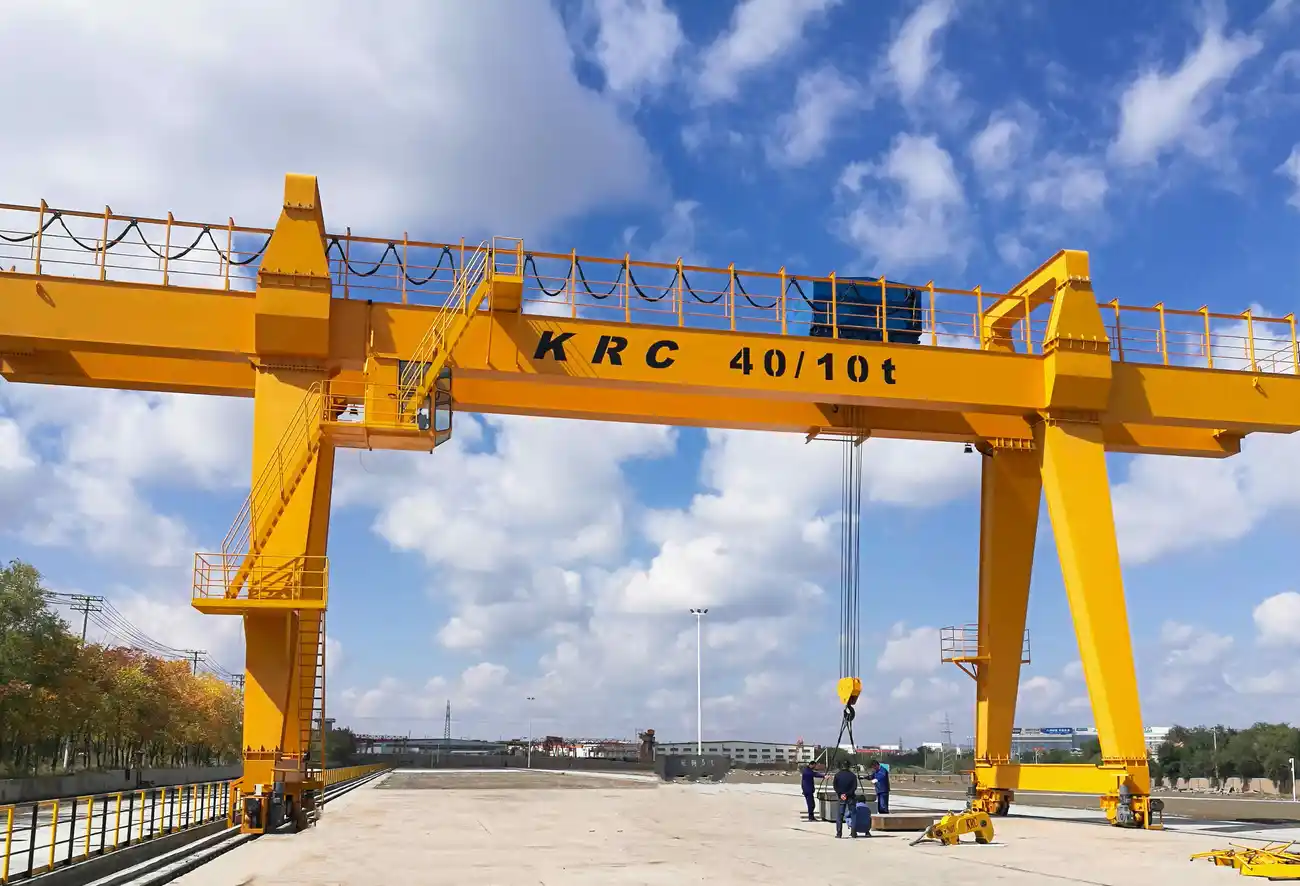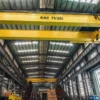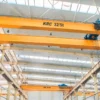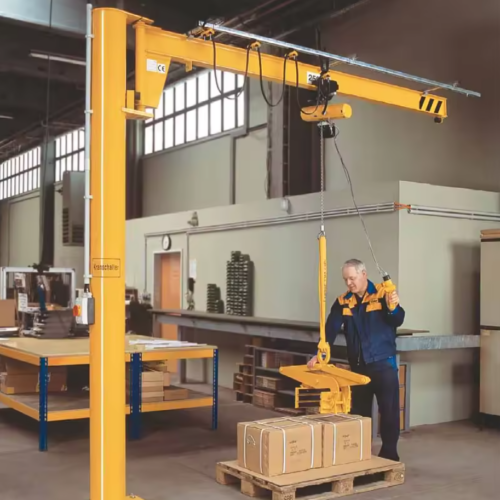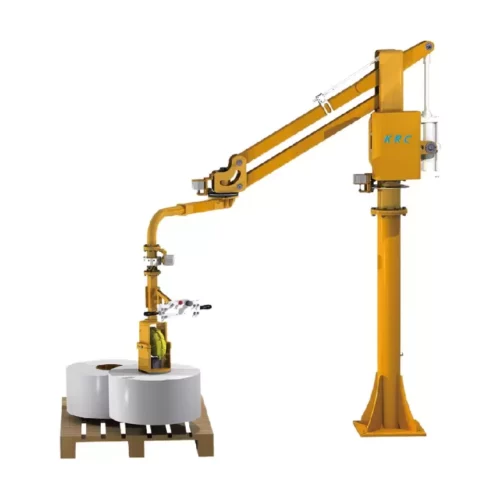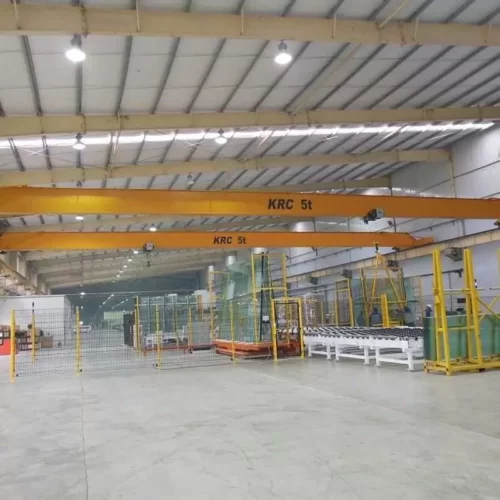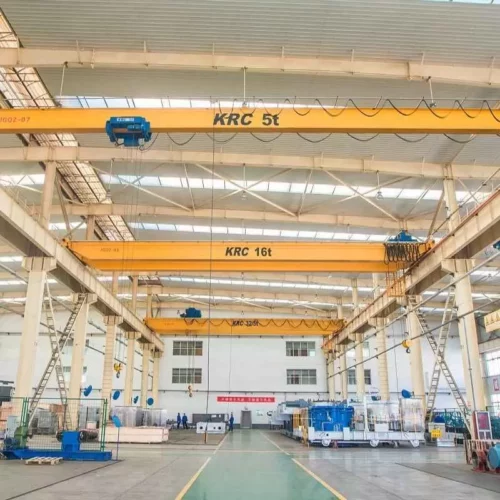10 ton overhead crane Safety Certifications
Operating a 10-ton overhead crane requires strict adherence to safety standards and certifications to ensure the safety of personnel and equipment. Key safety certifications and standards include:
1. OSHA Compliance: The Occupational Safety and Health Administration (OSHA) sets specific regulations for crane operation under standard 29 CFR 1910.179. This covers design, inspection, maintenance, and operation.
2. ASME B30.2: The American Society of Mechanical Engineers (ASME) B30.2 standard provides guidelines for the construction and use of overhead and gantry cranes. Compliance ensures the crane meets fundamental safety requirements.
3. ANSI Standards: The American National Standards Institute (ANSI) provides additional guidelines, including ANSI/ASSP B30.16, covering the safety standards for cranes, hoists, and lifting devices.
4. CMAA Specifications: The Crane Manufacturers Association of America (CMAA) offers specifications, notably CMAA 70 and CMAA 74, detailing the construction, testing, operation, and servicing of cranes.
5. Electrical Safety: Compliance with the National Electrical Code (NEC) ensures the electrical components and installations are safe and reliable.
6. Periodic Inspections: Regular inspections per OSHA and ASME specifications are mandatory. This includes daily operator inspections, frequent inspections by trained personnel, and periodic inspections by certified inspectors.
7. Operator Certification: Crane operators must hold valid certifications from accredited organizations like the National Commission for the Certification of Crane Operators (NCCCO). Proper training and certification are crucial for safety.
8. Load Testing: Periodic load testing as per OSHA and ASME guidelines ensures the crane can handle its maximum rated capacity safely.
9. Maintenance Documentation: Keeping detailed records of all maintenance and inspections helps in tracking the crane’s health and compliance with safety standards.
By adhering to these certifications and standards, the safety and efficiency of a 10-ton overhead crane operation can be maximized, reducing the risk of accidents and equipment failure.
List Reference Technical Parameters of “10 ton overhead crane”
When specifying an overhead crane with a 10-ton lifting capacity, it’s crucial to consider a range of technical parameters to ensure it meets operational and safety requirements. Here are key technical parameters often referenced:
1. Lifting Capacity: 10 tons (22,000 lbs.)
2. Span: The horizontal distance between the runway rails; it could range from 10 to 35 meters or custom as per requirement.
3. Lifting Height: The maximum vertical distance from the floor to which the crane can lift a load, typically between 6 to 30 meters.
4. Crane Speed:
– Hoisting Speed: The speed at which the crane can lift or lower a load, generally ranging from 0.5 to 8 meters per minute.
– Trolley Speed: The speed of the trolley that moves along the bridge, usually from 2 to 20 meters per minute.
– Bridge Speed: The speed of the entire crane moving along the runways, typically ranging from 5 to 100 meters per minute.
5. Duty Class: Defines the crane’s operational duty cycle (ISO or FEM Standard); common classes include A5 (Heavy Duty) or M5/M6.
6. Power Supply: The electrical input requirement, often 380V/50Hz (others available based on region).
7. Control Method: Options include pendant control, remote control, or cab control.
8. Motor and Drive: Types of motors used (e.g., Squirrel cage induction motors), power ratings, typically 5-20 kW, depending on the speed and capacity required.
9. Braking System: Electromagnetic or hydraulic brakes to ensure safety during operation.
10. Safety Features: Overload limiters, emergency stop buttons, limit switches, anti-collision systems, and warning alarms.
11. Structural Design: Single or double girder configurations, taking into account the application it is used for.
These parameters collectively ensure that the 10-ton overhead crane is tailored to specific operational needs and safety standards, ensuring efficiency and reliability in material handling tasks.
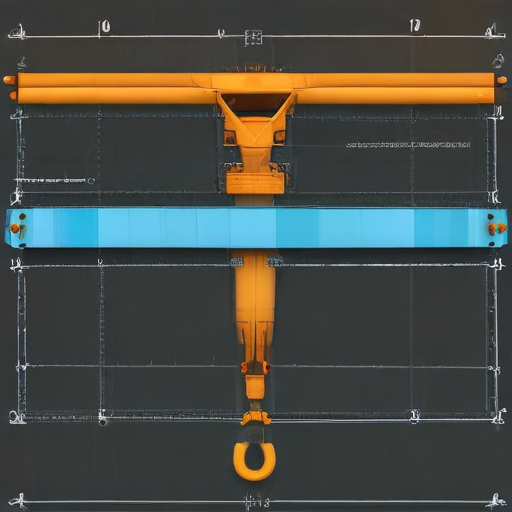
List Product features of “10 ton overhead crane”
Sure! Here are the key product features of a 10-ton overhead crane:
1. Lifting Capacity:
– Capable of lifting up to 10 tons, suitable for heavy-duty material handling.
2. Span:
– Available in various spans to fit different facility sizes, typically ranging from 10 to 40 meters.
3. Height of Lift:
– Customizable lifting height to meet specific operational requirements, generally ranging from 6 to 30 meters.
4. Types:
– Single-Girder or Double-Girder designs, tailored for different load-bearing needs.
5. Control Options:
– Multiple control methods, including pendant controls, wireless remote controls, and cabin (operator) controls.
6. Motor and Speed:
– High-performance motors with variable speed options for precise lifting and lowering operations.
7. Hoist Mechanism:
– Equipped with electric hoist systems for smooth and efficient lifting operations.
8. Safety Features:
– Safety mechanisms such as overload protection, emergency stop functions, limit switches, and anti-collision systems.
9. Durability:
– Constructed from high-quality materials for enhanced durability and long service life, often featuring corrosion-resistant finishes.
10. Ease of Installation:
– Designed for straightforward installation and integration into existing infrastructure.
11. Maintenance:
– Low maintenance design with easy access to components for routine checks and servicing.
12. Versatility:
– Applicable in various industries including manufacturing, warehousing, construction, and shipping.
13. Efficiency:
– Improves operational efficiency by enabling quick and safe transportation of heavy loads within a facility.
14. Customization:
– Can be customized in terms of capacity, span, lifting height, and additional accessories to match specific operational needs.
15. Compliance:
– Meets industry standards and regulations to ensure safe and reliable performance.
These features make a 10-ton overhead crane a robust and versatile tool for efficient material handling in diverse industrial environments.
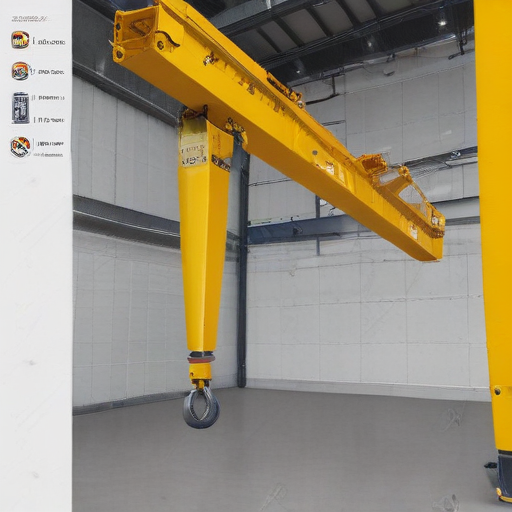
List Various Types of “10 ton overhead crane”
“10 ton overhead cranes” come in various types, each designed to suit specific applications, environments, and operational needs. Here are some common types:
1. Single Girder Overhead Crane:
– Description: Features a single bridge girder supported on two end trucks.
– Advantages: Cost-effective and easy to install; suitable for light to moderate lifting.
2. Double Girder Overhead Crane:
– Description: Comprises two girders for improved support and load distribution.
– Advantages: Capable of lifting heavier loads and offering greater hook height.
3. Top Running Overhead Crane:
– Description: The crane runs on rails mounted on top of the runway beams.
– Advantages: Maximizes vertical space, ideal for facilities with unrestricted headroom.
4. Under Running Overhead Crane:
– Description: The crane runs on tracks attached to the bottom of runway beams.
– Advantages: Efficient use of space, often used in buildings with restricted height.
5. Explosion-Proof Overhead Crane:
– Description: Designed for hazardous environments like chemical plants or oil refineries.
– Advantages: Features explosion-proof components to ensure safety in volatile atmospheres.
6. Magnetic Overhead Crane:
– Description: Equipped with a magnetic chuck to handle ferrous materials.
– Advantages: Specialized for lifting and transporting metal products efficiently.
7. Foundry Overhead Crane:
– Description: Specifically designed to handle the rigorous conditions of foundries.
– Advantages: Withstands high temperatures and provides precise pouring capabilities.
8. Workstation Overhead Crane:
– Description: Lightweight, modular systems ideal for specific workstations.
– Advantages: Easy to install and move, enhancing workflow efficiency.
9. European Standard Overhead Crane:
– Description: Conforms to FEM/DIN standards, featuring advanced technology.
– Advantages: High performance, energy efficiency, and ergonomic design.
10. Gantry Crane:
– Description: Similar to overhead cranes but supported by legs that move on wheels or tracks.
– Advantages: Offers flexibility in outdoor and indoor applications where overhead runways are impractical.
Each type of 10-ton overhead crane is tailored to balance functionality, efficiency, and safety, addressing specific operational requirements across industries.
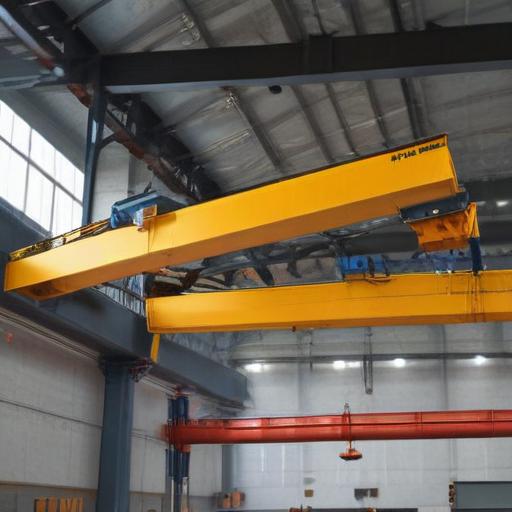
List Application of “10 ton overhead crane”
A 10-ton overhead crane is a versatile and powerful piece of lifting equipment that’s commonly used in various industries. Its applications range from material handling to assembly line facilitation. Below are some of its primary uses:
1. Manufacturing Plants: Moving heavy components along assembly lines or between different workstations, thus improving productivity and safety.
2. Warehouses: Lifting heavy pallets, containers, and other large items, streamlining the storage and retrieval processes.
3. Automotive Industry: Handling large vehicle components such as engines, chassis, and other heavy parts for assembly and maintenance.
4. Construction Sites: Transporting steel beams, prefabricated sections, and other building materials, essential for erecting structures efficiently.
5. Steel Mills: Transferring raw materials like ore and coal, handling molten metal in ladles, and moving finished steel products to shipping areas.
6. Shipyards: Assisting in the assembly and repair of ships by lifting heavy parts such as engines, propellers, and hull sections.
7. Power Plants: Managing heavy machinery and equipment like turbines, generators, and transformers during installation and maintenance.
8. Mining Operations: Aiding in the lifting and movement of heavy mining equipment and mineral deposits, improving operational efficiency.
9. Aerospace: Handling large aircraft components, such as wings and fuselage segments, during manufacture and maintenance activities.
10. Railway Yards: Lifting and positioning heavy railroad parts, including tracks and carriages, for repair and maintenance.
These cranes enhance safety by reducing the need for manual lifting, thus minimizing the risk of injuries. They also boost operational efficiency, making them invaluable in settings where the lifting of heavy loads is a routine requirement.
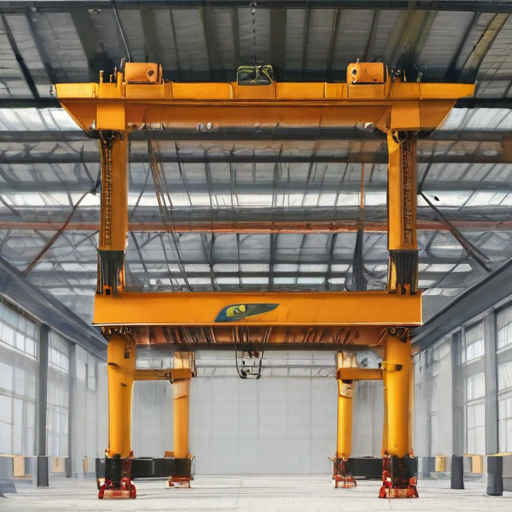
List Buyer Types of “10 ton overhead crane”
A “10 ton overhead crane” is a versatile piece of industrial equipment used primarily for lifting and transporting heavy loads within a specific area. Various types of buyers might be interested in acquiring such cranes, depending on their operational needs and industry requirements. Below are some common buyer types:
1. Manufacturing Plants: Facilities involved in heavy manufacturing often require overhead cranes for moving raw materials, semi-finished, and finished goods within the production area.
2. Warehouses and Distribution Centers: These locations benefit from overhead cranes for efficient handling and storage of inventory, improving workflow and reducing manual labor.
3. Construction Companies: In construction, overhead cranes are used to lift and place heavy building components, machinery, and materials, aiding in timely project completion.
4. Steel Mills and Metal Fabrication Shops: These industries need robust lifting solutions to handle heavy metals and large structural components, making overhead cranes indispensable.
5. Automotive Industry: From assembly lines to shipping areas, automotive companies employ cranes for handling car parts, engines, and other heavy components efficiently.
6. Shipyards and Docks: Overhead cranes are crucial for shipbuilding and port operations, as they facilitate the handling of large and heavy materials required in maritime activities.
7. Mining: Mines use overhead cranes for lifting heavy equipment, maintenance operations, and material handling within the mining site.
8. Power Plants: These facilities require overhead cranes for maintenance and installation of heavy machinery, such as turbines and generators.
9. Railway Maintenance Yards: Overhead cranes help in the repair and maintenance of railway equipment, including the handling of heavy train components.
10. Aerospace Industry: The precision and strength of overhead cranes are crucial for handling large aerospace components and assemblies safely and efficiently.
These varied industries and sectors all benefit from the capabilities of a 10 ton overhead crane, making it a valuable asset for enhancing operational efficiency and safety.
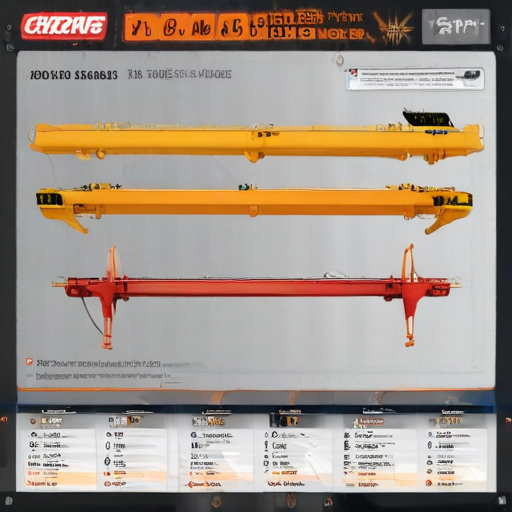
List “10 ton overhead crane” Project Types for Different Industries
Certainly! A 10-ton overhead crane is a versatile lifting solution used across various industries for handling heavy loads efficiently. Here are some project types for different sectors:
1. Manufacturing:
– Automobile Manufacturing: Handling car frames, engines, and assemblies.
– Machinery Production: Moving heavy machinery parts and assemblies.
2. Construction:
– Structural Steel Erection: Lifting steel beams and prefabricated elements.
– Bridge Construction: Moving large segments and other structural components.
3. Warehouse and Logistics:
– Material Handling: Streamlining the movement of heavy goods within large warehouses.
– Loading/Unloading: Facilitating efficient loading and unloading of freight in transportation hubs.
4. Energy:
– Wind Turbine Assembly: Lifting turbine components during installation and maintenance.
– Power Plant Maintenance: Handling heavy equipment and parts within power plants.
5. Aerospace:
– Aircraft Manufacturing: Transporting large aircraft parts and assemblies.
– Maintenance, Repair, and Overhaul (MRO): Efficiently moving heavy aircraft components for repairs.
6. Mining:
– Mineral Processing: Handling heavy processing equipment and raw materials.
– Mine Construction: Moving large machinery and structural components.
7. Shipbuilding:
– Ship Construction: Lifting hull sections and heavy ship parts.
– Dockyard Operations: Moving heavy equipment and materials in shipyards.
8. Paper and Pulp:
– Mill Operations: Handling massive rolls of paper and heavy machinery parts.
– Maintenance: Facilitating the transport of equipment for repairs and upgrades.
9. Chemical and Petrochemical:
– Plant Maintenance: Lifting heavy reactors, columns, and other plant equipment.
– Storage Management: Moving large containers and raw materials.
10. Steel Production:
– Billet and Coil Handling: Moving heavy steel billets, coils, and other products.
– Plant Operations: Assisting in the transport of heavy equipment and materials within steel plants.
These project types illustrate the adaptability of 10-ton overhead cranes across diverse sectors, aiding in the efficient handling of heavy and bulky items to streamline operations and enhance productivity.
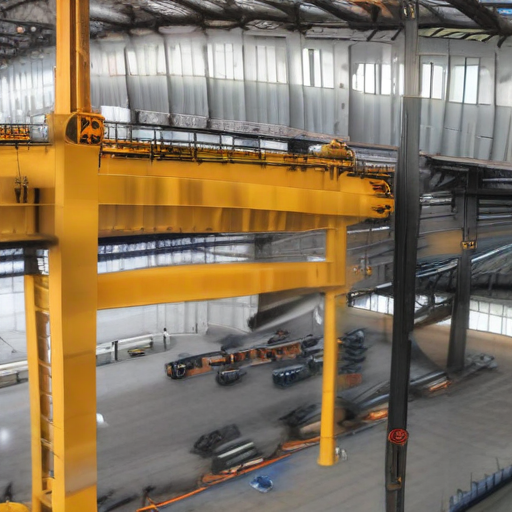
10 ton overhead crane Accessories Upgrades and Custom Manufacturing Options
Upgrading and customizing a 10-ton overhead crane can greatly enhance its performance, safety, and versatility. Here are some key accessories and custom manufacturing options to consider:
1. Wireless Remote Controls: Upgrade to wireless remote controls to improve operator safety and flexibility.
2. Variable Frequency Drives (VFD): Installing a VFD allows for smoother acceleration and deceleration, reducing mechanical stress and enhancing precision.
3. Anti-Sway Technology: This advanced feature minimizes the sway of the load, making operations safer and more efficient.
4. Load Indicators and Weighing Systems: Integrated load cells can provide accurate weight measurements, aiding in compliance with safety regulations.
5. Automated Systems and IoT Integration: Implement automation and IoT for advanced monitoring, predictive maintenance, and operational efficiency.
6. Hoist Upgrades: Upgraded hoists offer better speed control, higher lifting capacities, and enhanced safety features.
7. Custom End Trucks and Bogies: Tailor end trucks and bogies to fit specific operational needs or space constraints.
8. Runway Systems: Upgrades to the runway system can include reinforced tracks for heavier loads and quieter operation.
9. Spreader Beams and Lifting Attachments: Custom-designed lifting attachments can handle unique load shapes and sizes, improving versatility.
10. Cabin Enhancements: Custom operator cabins with ergonomic seats, climate control, and modern control panels can greatly improve operator comfort and efficiency.
11. Collision Avoidance Systems: Implementing collision avoidance systems enhances safety by preventing accidents with other equipment or structures.
12. Advanced Braking Systems: Upgraded braking systems improve load control and safety during lifting and lowering operations.
Custom manufacturing options allow you to tailor the crane’s specifications to your specific needs, ensuring optimal performance and reliability. When upgrading or customizing, always consider consulting with a professional to ensure compatibility and compliance with safety standards.
List Quality Control and The Manufacturing Process of “10 ton overhead crane”
Quality Control
1. Raw Material Inspection: Check the quality and specifications of steel and other input materials.
2. Welding Inspections: Use non-destructive testing (NDT) methods like ultrasonic testing and radiography to inspect welds.
3. Dimensional Checks: Ensure components meet design specifications using calipers, micrometers, and coordinate measuring machines (CMM).
4. Load Testing: Perform static and dynamic load tests to verify structural integrity and functionality.
5. Electrical Testing: Check all electrical systems, including motor insulation and circuit integrity.
6. Surface Treatment Inspection: Ensure proper application of corrosion protection methods like painting or galvanizing.
7. Final Assembly Check: Verify proper assembly and alignment of all parts.
8. Compliance Verification: Confirm adherence to industry standards such as ISO, CE, and OSHA.
9. Documentation Review: Maintain detailed reports of inspections, tests, and certifications.
Manufacturing Process
1. Design and Engineering: Create detailed technical drawings and specifications using CAD software.
2. Material Procurement: Source high-quality steel and components, ensuring compliance with material specifications.
3. Cutting and Shaping: Use CNC machines, laser cutters, and plasma cutters to shape steel beams, plates, and other components.
4. Welding and Assembly: Employ skilled welders and automated welding machines to assemble the crane structure.
5. Machining: Machine critical components like gears and shafts to precise tolerances.
6. Surface Treatment: Apply anti-corrosion treatments such as painting, galvanizing, or powder coating.
7. Electrical Installation: Install electrical systems including control panels, wiring, and motors.
8. Quality Control Checks: Perform rigorous testing and inspections at each stage of production.
9. Load Testing: Conduct load tests to ensure the crane can handle the specified weight without failure.
10. Final Assembly and Inspection: Complete the final assembly and perform a comprehensive inspection before shipping.
11. Packaging and Shipping: Pack all components securely and arrange for transportation to the installation site.
Effective quality control and a streamlined manufacturing process ensure the safety, reliability, and longevity of a 10-ton overhead crane.
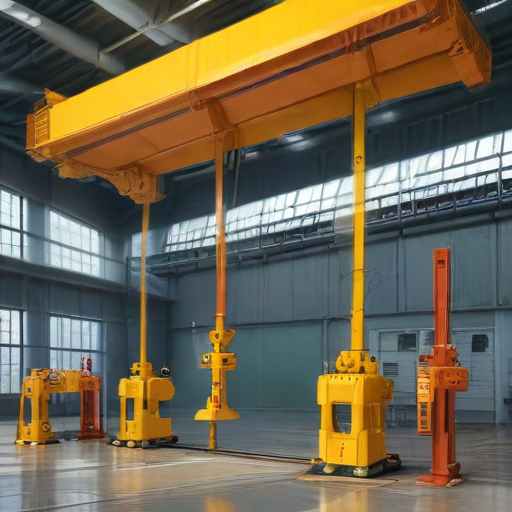
How to use “10 ton overhead crane”
Using a 10-ton overhead crane involves several steps to ensure safety and efficiency. Here’s a concise guide:
1. Pre-Operation Checks:
– Inspection: Examine the crane for any signs of wear, damage, or malfunction. Check hoist, hooks, wire ropes, and controls.
– Load Capacity: Verify that the load does not exceed the crane’s 10-ton capacity.
2. Preparing for Operation:
– Clear Area: Ensure the workspace is clear of obstructions and personnel.
– Safety Gear: Wear appropriate personal protective equipment (PPE) like helmets, gloves, and safety shoes.
3. Operating the Crane:
– Power On: Switch on the power supply to the crane.
– Controls Familiarization: Understand the operation of pendant control or remote control for direction and speed.
– Hoist: Attach the load securely using slings or chains. Ensure the load is balanced.
– Lift Slightly: Lift the load a few inches off the ground to test stability. Double-check for secure attachment and balance.
4. Movement:
– Travel: Move the crane slowly to the desired location. Use smooth and gradual movements to avoid swinging the load.
– Monitor: Constantly watch the load and surroundings for any hazards or unexpected movements.
– Communication: Use hand signals or communication devices to coordinate with other team members.
5. Lowering the Load:
– Position: Carefully position the load over the intended spot.
– Lower: Gradually lower the load into place, ensuring even ground contact to avoid tipping.
6. Post-Operation:
– Secure Load: Once positioned, detach the slings or chains safely.
– Turn Off: Switch off the crane and place the controls back in a safe position.
– Inspection: Perform a brief check to ensure the crane is in good condition for the next use.
Safety Reminder:
Always adhere to your organization’s safety protocols and manufacturer’s operating instructions. Regular training and certification are essential for crane operators.
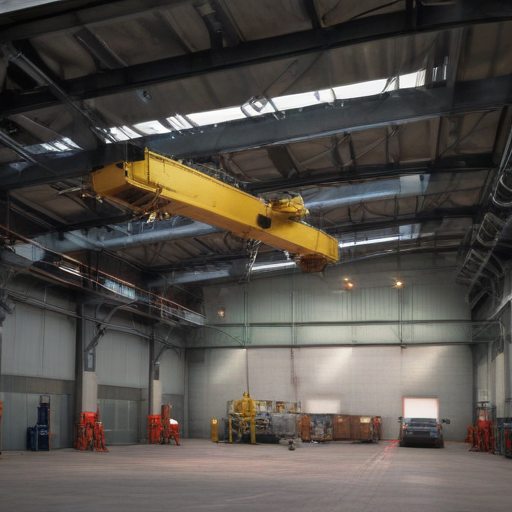
“10 ton overhead crane” Comparative Analysis
Overhead cranes, specifically the 10-ton variant, play a pivotal role in heavy lifting across industries like manufacturing, warehousing, and construction. Below, we conduct a comparative analysis of different types of 10-ton overhead cranes based on key criteria: functionality, cost, installation complexity, and maintenance.
1. Single Girder Overhead Crane:
– *Functionality:* Optimal for moderate loads and spans. Limited vertical lifting height due to single girder design.
– *Cost:* Generally lower initial investment due to simpler design.
– *Installation Complexity:* Easier and faster installation compared to double girder cranes.
– *Maintenance:* Less complex, thus typically requiring lower maintenance efforts and costs.
2. Double Girder Overhead Crane:
– *Functionality:* Superior for heavy-duty use, providing higher lift heights and enhanced stability.
– *Cost:* Higher initial cost due to more complex design and heavier materials.
– *Installation Complexity:* More challenging installation due to extra girder and additional structural components.
– *Maintenance:* Potentially higher maintenance needs, balanced by greater lifespan and performance.
3. Top Running Overhead Crane:
– *Functionality:* Ideal for maximal bridge and lifting heights as it runs on rails mounted on top of the runway beams.
– *Cost:* Higher structural cost as it necessitates a robust runway system.
– *Installation Complexity:* Requires significant structural considerations, especially for tall bays or heavy-duty applications.
– *Maintenance:* Moderate, with accessibility advantages offset by possible wear on top-mount components.
4. Under Running (Underslung) Overhead Crane:
– *Functionality:* Best for spaces with limited headroom. Runs on the bottom flange of runway beams.
– *Cost:* May vary; often lower structural costs if the existing roof structure can support it.
– *Installation Complexity:* Easier in constrained spaces but may require special mounting techniques.
– *Maintenance:* Generally easier due to accessible runway systems, albeit with potential limitations in load capacity expansion.
Conclusion:
Selecting the appropriate 10-ton overhead crane involves balancing functional needs, budgetary constraints, installation feasibility, and ongoing maintenance. Single girder cranes are cost-effective for lighter duties, while double girder cranes shine in heavy-duty environments. Top running cranes maximize vertical space but at a higher initial and structural cost, whereas under running cranes are practical for low headroom applications with varied installation and cost dynamics.
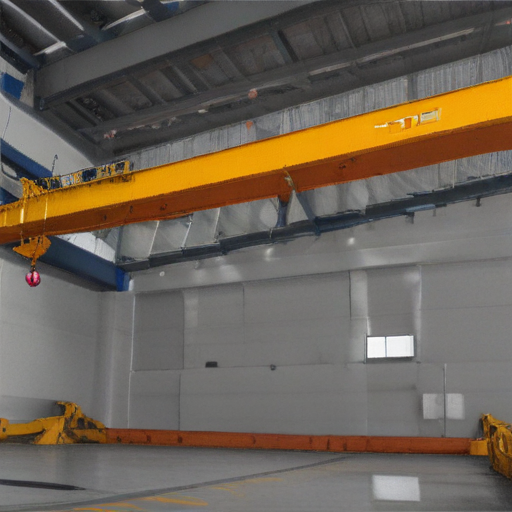
“10 ton overhead crane” Warranty and Support
Warranty and Support
When investing in a 10-ton overhead crane, understanding the warranty and support provisions is crucial for long-term operation and peace of mind. Most manufacturers offer a standard warranty covering the crane’s structural components, mechanical parts, and electrical systems. Typically, this warranty spans one to two years, but it may vary based on the manufacturer and specific model. Ensure to verify the details in the contract.
The warranty often includes coverage for defects in materials and workmanship. During this period, manufacturers usually provide free repairs or replacements for faulty components. It’s essential to note that misuse, overloading, or unauthorized modifications may void the warranty. Regular maintenance records might be required to uphold the warranty terms.
Support services are equally important. A comprehensive support plan often includes 24/7 customer service, online troubleshooting guides, and access to qualified technicians for on-site repairs and maintenance. Many suppliers also offer training programs for operators and maintenance personnel, ensuring safe and efficient use of the equipment.
Some manufacturers propose extended warranty plans and post-warranty service contracts. These can cover additional years beyond the standard warranty and may include routine inspections, preventive maintenance, and priority service in the event of a breakdown.
When evaluating different suppliers, consider their reputation for customer service and the availability of local service centers or certified technicians. Prompt and reliable support can significantly reduce downtime and enhance the longevity of your 10-ton overhead crane.
In summary, a robust warranty and support package is vital. Ensure to review terms comprehensively, inquire about extended plans, and opt for a partner known for excellent after-sales service. This will safeguard your investment and ensure seamless operations.
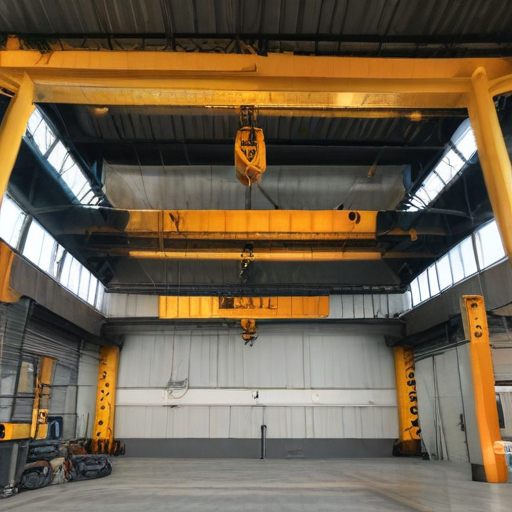
List “10 ton overhead crane” FAQ
10 Ton Overhead Crane FAQ
1. What is a 10 ton overhead crane?
– A 10 ton overhead crane is a lifting and material handling equipment capable of lifting loads weighing up to 10 tons. It consists of runways, a bridge, and a hoist for vertical lifting.
2. Where is a 10 ton overhead crane typically used?
– These cranes are widely used in manufacturing plants, warehouses, workshops, and industrial facilities where heavy lifting is required.
3. What are the main types of 10 ton overhead cranes?
– The two main types are single-girder and double-girder. Single-girder cranes have one main bridge girder, while double-girder cranes have two, offering greater load distribution and capacity.
4. What are the benefits of using a 10 ton overhead crane?
– Benefits include increased efficiency, enhanced safety, reduced labor costs, and the ability to lift and move heavy items with precision.
5. What factors should be considered when selecting a 10 ton overhead crane?
– Consider the lifting height, span, duty cycle, environment, power supply, and specific application requirements.
6. What maintenance is required for a 10 ton overhead crane?
– Regular inspections, lubrication, checking for wear and tear, and ensuring all safety features are functional are vital for maintaining the crane’s performance and safety.
7. Can a 10 ton overhead crane be customized?
– Yes, cranes can be tailored to specific industry requirements, including different spans, lifting speeds, control systems, and environmental adaptations.
8. What safety features are essential in a 10 ton overhead crane?
– Essential safety features include overload protection, emergency stop buttons, limit switches, and anti-collision devices.
9. How is a 10 ton overhead crane operated?
– Operation can be manual via a pendant control, a wireless remote control, or an automated control system, depending on the specific crane model and user preference.
10. What is the typical lifespan of a 10 ton overhead crane?
– With proper maintenance, these cranes can last 20-30 years or more, although the actual lifespan depends on usage frequency and operating conditions.
This FAQ covers the basic questions about 10 ton overhead cranes, focusing on their use, benefits, types, maintenance, and safety features.
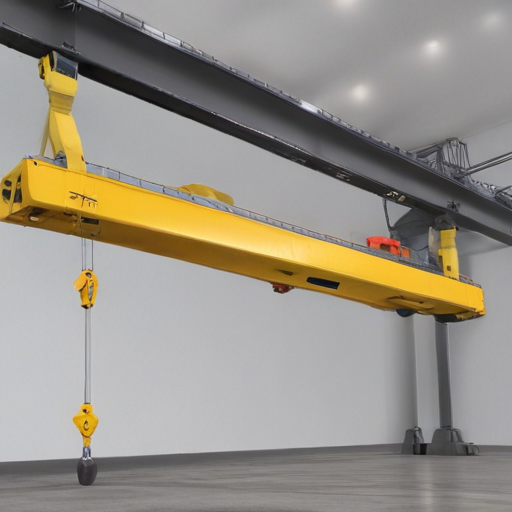
Top 10 FAQ with answer about 10 ton overhead crane for Buyer Sourcing from China
1. What is the typical lead time for a 10-ton overhead crane from China?
– The manufacturing and delivery time can range from 4 to 10 weeks, depending on customization, production schedules, and shipping logistics.
2. Are Chinese overhead cranes compliant with international standards?
– Yes, many Chinese manufacturers produce cranes compliant with international standards like ISO, CE, and ASME. Always verify compliance before purchasing.
3. What is the average cost of a 10-ton overhead crane from China?
– Prices can vary widely based on specifications, but a typical range is $10,000 to $30,000. Detailed quotes should be obtained directly from manufacturers.
4. What certifications should I look for when sourcing from China?
– Look for ISO 9001, CE marking, and any certifications relevant to specific regions or industries, such as SGS or BV inspection reports.
5. Can I customize the crane to suit specific requirements?
– Yes, most manufacturers offer customization options for various parameters like span length, lifting height, control mechanisms, and additional features.
6. How do I ensure the quality of the crane before purchase?
– Conduct due diligence by reviewing the manufacturer’s certifications, previous customer reviews, and requesting pre-shipment inspections or third-party verification.
7. What is the warranty period for a 10-ton overhead crane?
– Warranties typically range from 12 to 24 months, covering manufacturing defects and providing support for maintenance and repairs.
8. What kind of after-sales support is available?
– Chinese manufacturers usually offer remote support, spare parts, and, in some cases, on-site service agreements. Verify the specifics with your supplier.
9. What information do I need to provide for an accurate quote?
– Provide details such as lifting capacity, span, lifting height, duty cycle, power supply, and any specific applications or operating conditions.
10. Are there any import duties or taxes when purchasing from China?
– Yes, import duties and taxes vary by country. It’s essential to check your country’s customs regulations and factor these costs into your budget.

